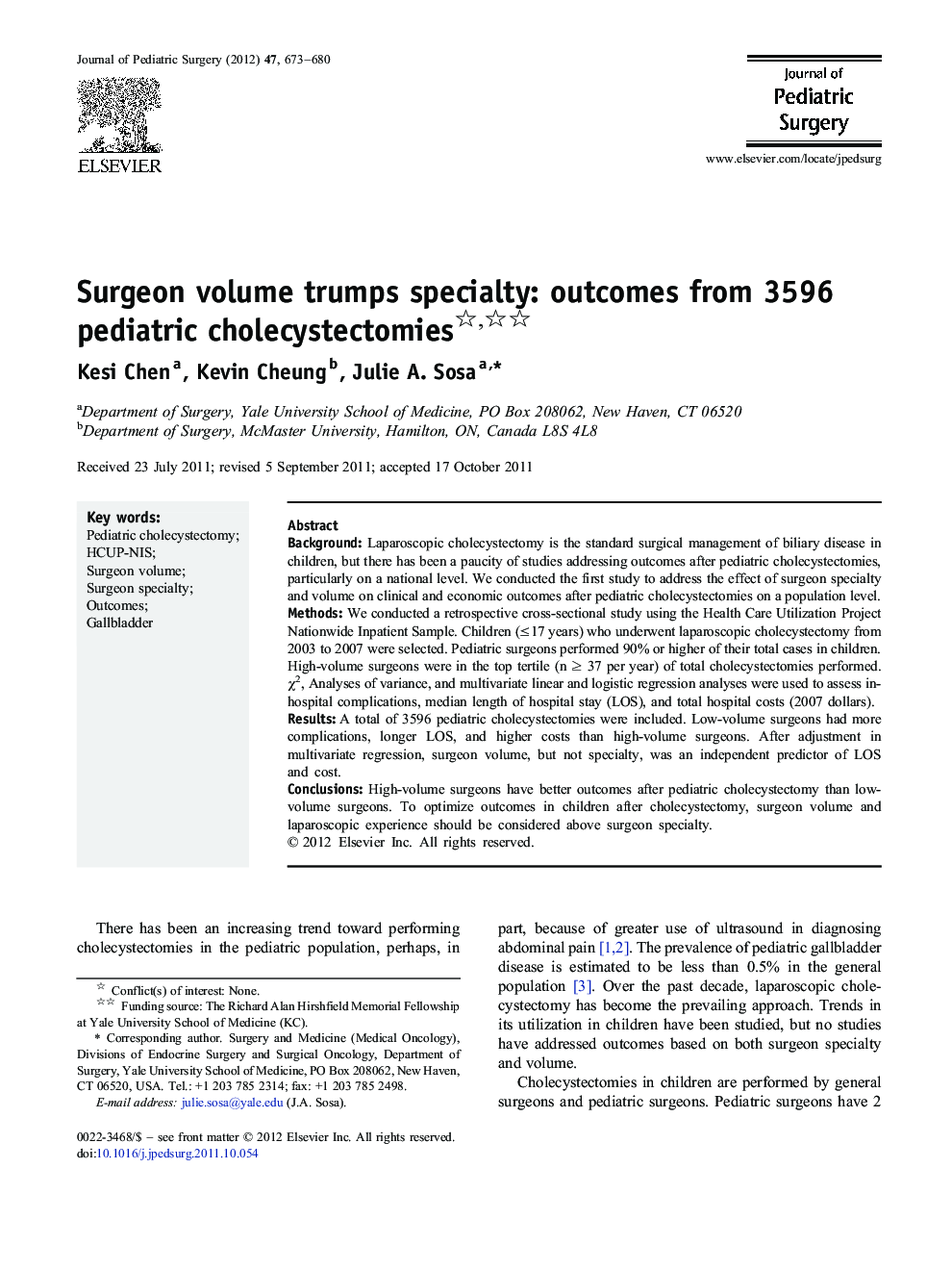| Article ID | Journal | Published Year | Pages | File Type |
|---|---|---|---|---|
| 6217234 | Journal of Pediatric Surgery | 2012 | 8 Pages |
BackgroundLaparoscopic cholecystectomy is the standard surgical management of biliary disease in children, but there has been a paucity of studies addressing outcomes after pediatric cholecystectomies, particularly on a national level. We conducted the first study to address the effect of surgeon specialty and volume on clinical and economic outcomes after pediatric cholecystectomies on a population level.MethodsWe conducted a retrospective cross-sectional study using the Health Care Utilization Project Nationwide Inpatient Sample. Children (â¤17 years) who underwent laparoscopic cholecystectomy from 2003 to 2007 were selected. Pediatric surgeons performed 90% or higher of their total cases in children. High-volume surgeons were in the top tertile (n ⥠37 per year) of total cholecystectomies performed. Ï2, Analyses of variance, and multivariate linear and logistic regression analyses were used to assess in-hospital complications, median length of hospital stay (LOS), and total hospital costs (2007 dollars).ResultsA total of 3596 pediatric cholecystectomies were included. Low-volume surgeons had more complications, longer LOS, and higher costs than high-volume surgeons. After adjustment in multivariate regression, surgeon volume, but not specialty, was an independent predictor of LOS and cost.ConclusionsHigh-volume surgeons have better outcomes after pediatric cholecystectomy than low-volume surgeons. To optimize outcomes in children after cholecystectomy, surgeon volume and laparoscopic experience should be considered above surgeon specialty.
